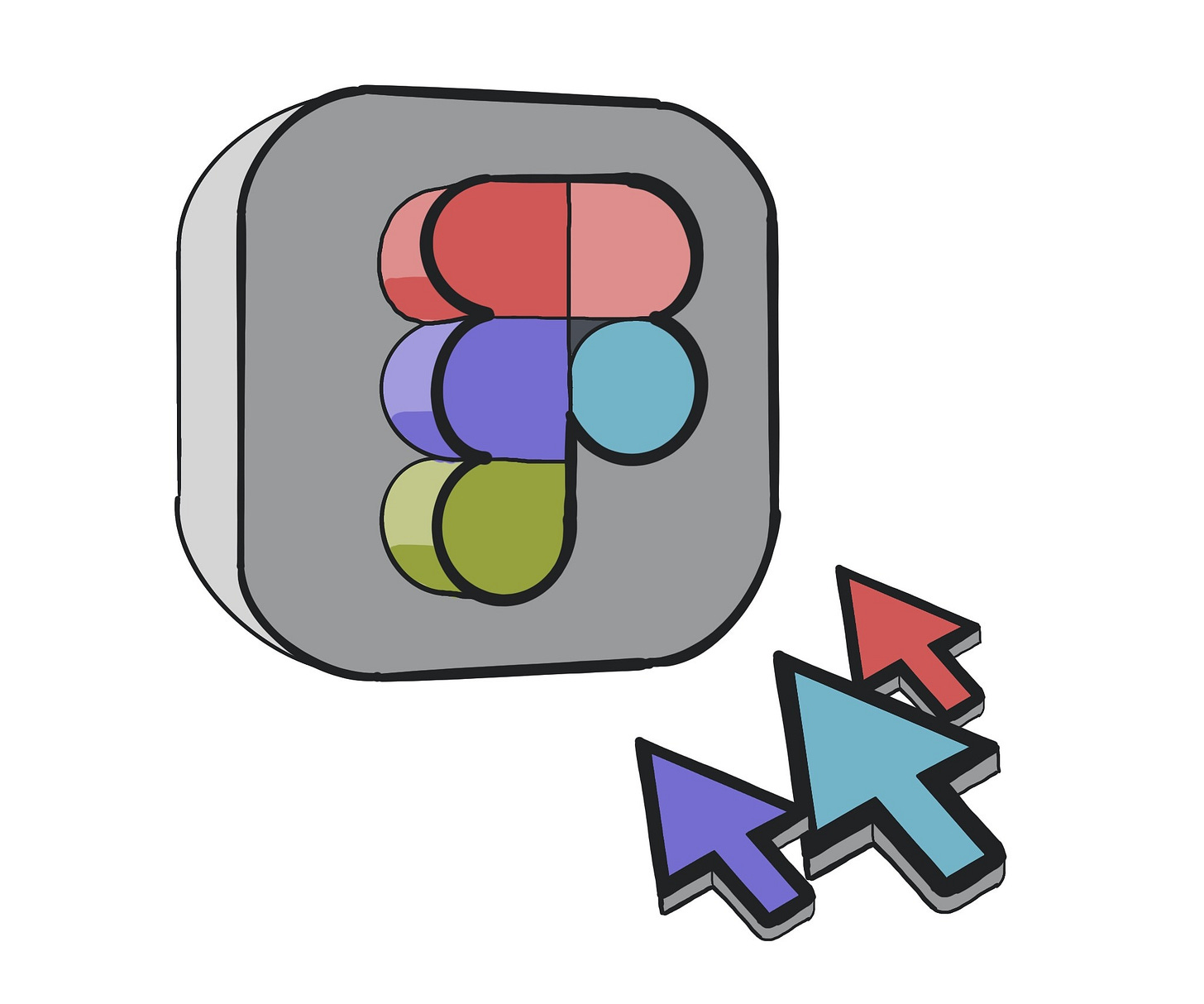Innovating Beyond User Data and Feedback
How Figma’s multiplayer feature exemplifies the importance of making bold, intuitive decisions even when customers don’t see the need.
Customer feedback is often the compass guiding businesses and teams toward valuable improvements. Yet intuition is an equally crucial element sometimes overlooked when everything has to be measurable in a roadmap. The balance between responding to direct user feedback and relying on a visionary sense of where the product should evolve can make the difference between a good and a great product.
Dylan Field, CEO of Figma, powerfully exemplifies this balance in his conversation with Elad Gil. One of the most striking examples he shared was the development of multiplayer editing in Figma. Although users did not widely request this feature, it became one of Figma’s most transformative offerings.
One model that I love a lot is like, keep the simple things simple, but make the complex things possible. And I think that the more you can do that, the better your product will be and the more will be loved. I think that there's some things where no one will ask for them, but they're really important. So, for example, multiplayer for Figma was one of those we had maybe like one person or two people asked for it out of like hundreds we had talked to, because most people weren't working at the same computer at the same time. I had done my internship at Flipboard, and it helped me have a sense that it could be important. Evan and I had both done a lot of playing around with Google Wave, which was a thing at some point for a brief moment, but I think we've both had this sort of conviction around collaboration, multiplayer editing. But most designers, we asked, hey, do you want to do this activity with the browser in real time? And they're like, no, I have no interest in that at all. But nevertheless, we started building. Figma realized, okay, if it's last, edit wins. And we're both in the tab at the same time, and you make an edit, and my thing reloads, and I'm making edit your thing reloads, it just sucks. And so clearly when you do this thing and we went all in on it and took like nine months to go build. And so I think that when you kind of have those insights, even if no one's asking for them, you have to prioritize them sometimes.
Elad Gil Fireside with Dylan Field on Feb 13, 2023 - YouTube
Listening to Users But Not Always Following
Many product managers focus on delivering what customers ask for. That’s often where valuable insights can come from, and it’s necessary to ensure that user pain points are addressed. As Field noted, when Figma’s team asked designers if they wanted real-time collaboration, the response was underwhelming: “No, I have no interest in that at all.” Most designers weren’t working collaboratively, and many couldn’t see the value in multiplayer editing.
Had Figma’s team based their decision solely on this feedback, they might have dismissed the feature entirely. However, Dylan and his co-founder, Evan Wallace, had a different vision. Their previous experiences—Dylan’s internship at Flipboard and their experimentation with Google Wave—gave them a hunch that collaboration in real-time could be a game-changer. Their instinct to focus on this capability, even without user demand, was crucial to Figma’s success.
This highlights an important truth: users know what they want based on their current and past experiences but may not always imagine the possibilities beyond their immediate needs. As product designers, we must recognize when customer data is not enough and when we need to lean on our intuition to shape the future of the product.
Why Intuition Matters
Customer data is incredibly valuable—it helps ensure you’re solving real problems. However, relying solely on what users tell you can create blind spots. Visionary product design sometimes requires seeing the future in ways customers can’t yet articulate.
In Figma’s case, the team noticed that collaboration was often hindered by asynchronous workflows, where multiple designers worked on the same project but couldn’t edit in real-time. Even though customers didn’t identify this as a pain point, Dylan and his team saw it as a problem worth solving. This intuition led to Figma becoming one of the most beloved tools for designers, largely due to its collaborative features.
Field described how the Figma team worked for nine months to build the multiplayer feature despite limited demand. It wasn’t easy, and they faced numerous technical challenges. The result, however, was a feature that redefined how design teams collaborate in real-time across the globe.
A Model for Product Decision-Making
Keeping it Simple by Making the Complex Possible
Dylan Field shared a powerful mantra: “Keep the simple things simple, but make the complex things possible.” This philosophy is at the heart of balancing data with intuition. Simple features that users ask for should be addressed and streamlined, ensuring that core needs are met without unnecessary complexity. However, the truly transformative aspects of a product often lie in making complex features that may not be requested.
In Figma’s case, multiplayer editing was a complex feature that no one explicitly asked for, but once it was implemented, it radically transformed the product experience. It allowed designers to work together in real-time, seamlessly synchronizing changes and enabling collaboration in ways that weren’t possible before. Suddenly, design teams could work more efficiently, with fewer handoffs and less confusion.
Balancing Innovation with Tech Debt
Another balancing act Dylan Field mentioned is managing technical debt while pushing forward with innovative product development. Ignoring tech debt can cripple a product in the long run, leading to sluggish performance and an inability to iterate quickly. But, if all you do is address tech debt, your product stagnates, and innovation halts. This balance between maintenance and forward-thinking innovation parallels the need to balance customer feedback with visionary decisions.
If Figma had been bogged down with only fixing minor bugs or enhancing existing features, they might never have taken the bold leap to build multiplayer editing. It’s a reminder that great products are made by improving what already exists and taking risks to create what users don’t yet know they need.
Read my previous article to learn more about debt and its effect on velocity.
Conclusion
Building successful products involves listening to customers and trusting your instincts as a designer. Sometimes, the most impactful features are not the ones users ask for but the ones you sense they will need once they experience them.
The story of Figma’s multiplayer editing is a testament to this. By taking the risk to build something they believed in—even when customer demand was almost nonexistent—the Figma team ultimately created a product designers now can’t live without. As product designers, we should strive to balance customer data with intuition, aiming to keep the simple things simple while making the complex things possible, even when the customer may not yet know what’s possible.



